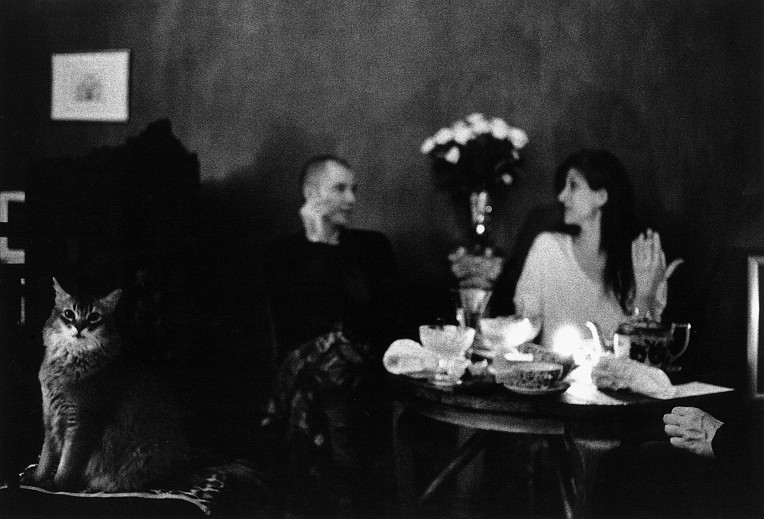
Division Review
November 21, 2017 - Tim Maul
On the Photography of Allen Frame
by Tim Maul
Selecting images from DETOUR/ALLEN FRAME (Kehrer Verlag Heidelberg, 2001) involved engaging with a dark, elegant publication that draws a curtain on a world where sign languages of eros are embedded within a languorous drift of grain. Frame’s CV as an photographer, educator, performer, and film producer could fill this allotted space; most significantly Frame is a surviving member of the 1970’s ‘Boston School’ of artists and photographers whose historicization accelerated from the ongoing AIDS epidemic which so decimated its ranks. Its photographers include revered cultural figures such as David Armstrong, Mark Morrisoe, Jack Pierson and Nan Goldin. Now mythic, they exemplified a louche but socially determined LBGTQ clique originating in Boston with branches in Provincetown, NYC, London, and Berlin during that fabled age of cheap rents, cheap international flights, and endlessly accommodating friends of friends.
A detour redirects one off the expected physical or social route snapping him/her out of reverie while alerting them to an immediate unknown. Maybe we pull over and roll down the window to get our bearings. If the detour is social, perhaps we settle back to regard this new set of people, our camera at the ready for the person or place that holds our sharpened attention. This marooned down time is the mildly decadent sweet space between events Frame reserves for being his most productive. Depending on who is behind the lens, every camera is capable of transforming a nobody into a somebody which Frame accomplishes as part of larger, but more complex pictorial agenda. Frames people share a lean contemporary physical beauty and unstudied sense of self, owning whatever space they are in. They appear members of an oblique but not overly familial community inhabiting interiors of hotel-room minimalism with few reassuring reference points to time or place. Every image’s title requires reading to pinpoint our location on the globe, even if an individual’s style may read as ‘eastern block’ we could be anywhere. Frames highly original compositional skills are so much a natural state they can go unnoticed. He halts the viewfinder upon a single subject that signals his full attention; a youth reclines on a beach, we know he lies upon sand but it could be snow because nothing else matters but him in perpetuity. Frame’s companions do not always fall on the side of comfort, the series of New Directions book covers Frame produced for Roberto Bolano’s often brutalist fiction unsettle and border on the delerious. A floating man is masked in shadow, motor scooters trouble our sleep, that wielded revolver could be real or a ‘prop’.
Both Frame and I were born in 1951 and the early 70’s was a great time to be a cultural sponge; too bad that Warhol was no longer in the ‘superstar’ business, many positions could have been filled. Night life’s permissive spaces and art house cinema provided a romantic alternative universe to the glamor-deprived ‘white cube’ world of galleries and the official avantgarde. Frame’s arresting use of black and white in DETOUR references ‘beat’ photographer Robert Frank while his stark lighting derives from cinema’s silent era films, German Expressionism, Italian Neo Realism, Nouvelle Vague, Underground and early No Wave features by Jim Jarmusch and others. While the film still is not the site of discovery for Frame’s art the stage with its blackouts and revolving sets certainly may be; I have come to regard Allen Frame’s DETOUR collection as shadow theatre for desirous adults.
Download Article (PDF)